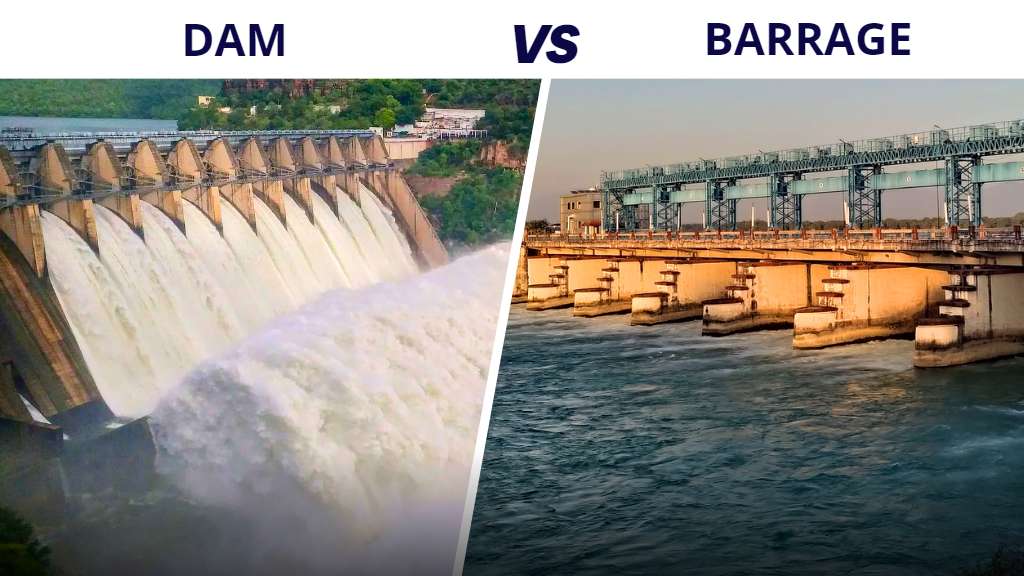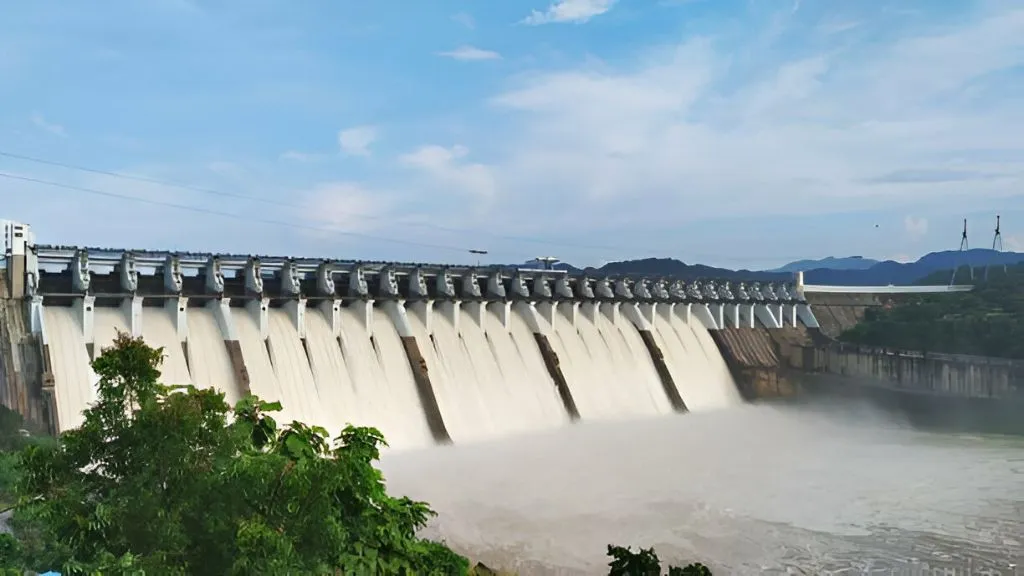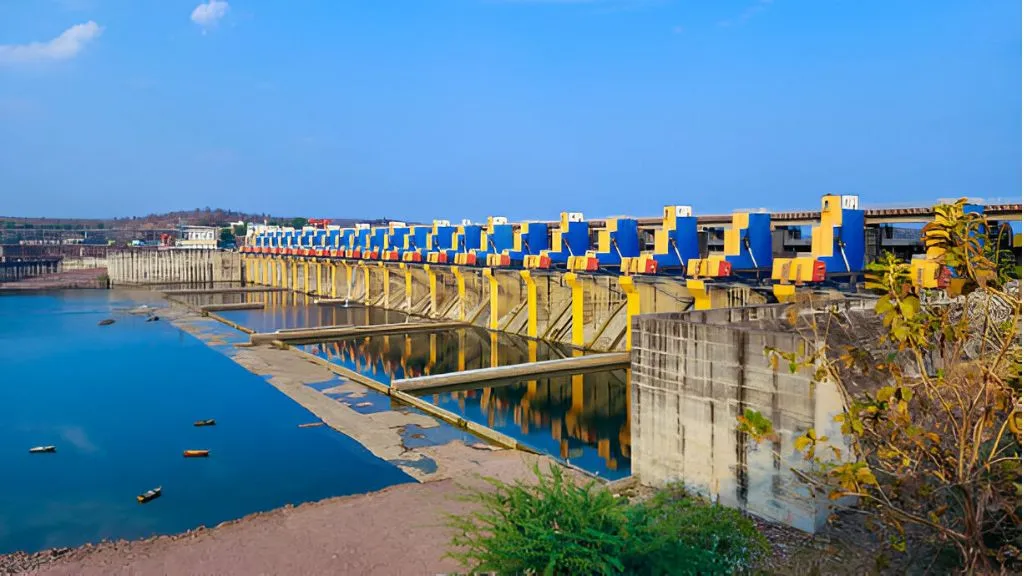
When it comes to water management and control, two key structures play a vital role: dams and barrages. While both serve similar purposes, there are distinct differences that set them apart. Understanding the dissimilarities between dams and barrages is crucial for comprehending their unique functionalities and impacts on water resources.
In this article, we will understand the difference between a dam and a barrage and shed light on how each structure contributes to water management, environmental sustainability, and the needs of local communities. But before we dive into the barrage vs dam comparison, let’s have a clear understanding of what are a dam and a barrage.
What is a Dam?

A dam is a large man-made structure built across a river or stream to control and store water. It creates a reservoir by impounding water behind it. Dams serve multiple purposes, including water supply, flood control, hydroelectric power generation, navigation, and recreation.
They store water for drinking, irrigation, and industrial use, ensuring a reliable water supply. By regulating water flow, dams help mitigate floods and protect downstream areas. Many dams are equipped with turbines and powerhouses to generate electricity from the stored water, contributing to renewable energy production.
What is a Barrage?

A barrage is a man-made structure constructed across a river, estuary, or tidal basin to regulate and control water flow. It consists of a series of gates or barriers that can be opened or closed to manage the movement of water. Unlike dams, barrages typically do not create significant reservoirs. They are primarily used to divert water and control its flow for specific purposes.
Barrages are commonly employed for irrigation, redirecting water into canals to supply agricultural lands. They also help regulate saline intrusion in coastal areas by controlling the movement of seawater. Additionally, barrages can be utilized to generate hydroelectric power by harnessing the energy of flowing water.
They provide a means of managing water levels and preventing flooding in certain regions. Barrages have fewer environmental impacts compared to dams since they do not create large-scale reservoirs. However, they can still affect local ecosystems and sediment transport patterns.
After the definitions of a dam and a barrage, let’s get into the difference between a dam and a barrage.
4 Difference Between a Dam and a Barrage
A dam and a barrage are both structures built across rivers or streams to control the flow of water. However, there are some key differences between the two:
1. Barrage vs Dam: Understand the Purpose of Building a Dam
Dam: A dam is primarily built to store water, creating a reservoir or a lake behind it. It is designed to hold back large volumes of water and release it as needed for various purposes, such as irrigation, drinking water supply, hydroelectric power generation, or flood control.
Barrage: A barrage is typically constructed to divert water and regulate its flow. It is often used to redirect water into canals for irrigation purposes or to control saline intrusion in coastal areas. Unlike a dam, a barrage doesn’t usually create a significant reservoir.
2. Barrage vs Dam: Structure and Operation
Dam: Dams are generally constructed as solid structures made of concrete or compacted earth materials. They are built to withstand the pressure exerted by the water in the reservoir. Dams usually have spillways or gates that can be opened or closed to control the release of water.
Barrage: Barrages are often built with a series of gates or barriers across a river or estuary. These gates can be opened or closed to regulate the flow of water. Barrages may also incorporate sluice gates to manage water levels and prevent saltwater intrusion in coastal regions.
3. Dam vs Barrage: Water Storage
Dam: Dams have the ability to store large amounts of water in reservoirs, which can be used during periods of drought or for maintaining a constant water supply.
Barrage: Barrages typically do not store water to the same extent as dams. They are primarily used to control the flow and direction of water rather than storing it for long periods.
4. Dam vs Barrage: Impacts on Environment
Dam: Constructing a dam often leads to significant environmental impacts, such as the submergence of land, alteration of natural river flow, and disruption of aquatic ecosystems. Dams can also affect the migration patterns of fish and other wildlife.
Barrage: Barrages may have less impact on the environment compared to dams since they usually don’t create large reservoirs. However, they can still have some local ecological consequences, particularly related to changes in water flow and sediment transport.
Concluding Thoughts
Understanding the difference between a dam and a barrage is crucial for comprehending their distinct roles in water management. Dams are massive structures built to store water, create reservoirs, and regulate its release for various purposes such as irrigation, power generation, and flood control.
In contrast, barrages are designed to divert and control water flow, primarily used for irrigation canals and coastal protection. By recognizing the disparities between dams and barrages, we can make informed decisions about water management strategies that balance human needs with environmental considerations, ensuring a sustainable and resilient future for our water resources.






